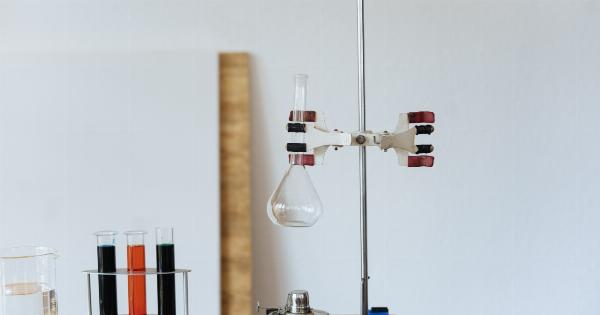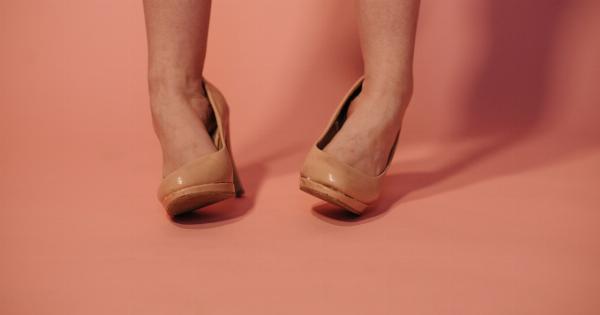Ankle swelling, also known as peripheral edema, is a common condition that can affect individuals of all ages.
It occurs when excess fluid accumulates in the tissues surrounding the ankles, leading to visible swelling, discomfort, and restricted movement. While ankle swelling is often a temporary and harmless condition, it can sometimes be a symptom of an underlying health issue.
In this article, we will explore the possible culprits behind ankle swelling and discuss some effective solutions to alleviate the discomfort.
1. Injury or Trauma
One of the most common reasons for ankle swelling is injury or trauma. Sprained ankles, fractures, and twists can lead to swelling as the body responds to the damage by increasing blood flow to the area.
This influx of blood causes inflammation and swelling. In such cases, the swelling is typically localized to the injured ankle and is accompanied by pain, tenderness, and difficulty in weight-bearing.
2. Prolonged Sitting or Standing
If you often find yourself sitting or standing for extended periods, you may experience ankle swelling due to fluid pooling in the lower extremities.
Gravity plays a role in this situation, as it can cause fluid to accumulate in the ankles and feet over time. This type of swelling, known as dependent edema, is usually relieved by elevating the legs and engaging in regular movement to improve blood circulation.
3. Obesity
Excess body weight can also contribute to ankle swelling. The additional pressure placed on the lower extremities due to obesity can hinder the proper flow of blood and fluids, leading to edema.
Losing weight through a healthy diet and regular exercise can help alleviate the swelling and improve overall ankle health.
4. Venous Insufficiency
Venous insufficiency occurs when the veins in the legs fail to efficiently return blood back to the heart. This can lead to fluid accumulation in the lower extremities, including the ankles.
Individuals with venous insufficiency may experience swelling, pain, and aching in the legs, particularly after prolonged periods of standing or sitting. Wearing compression stockings and engaging in exercises that promote blood circulation can ease the symptoms of venous insufficiency.
5. Lymphatic Issues
The lymphatic system is responsible for draining excess fluid from the tissues. When the lymphatic system is compromised, such as in cases of lymphedema or lymphatic obstruction, fluid can accumulate in the ankles and cause swelling.
Lymphedema can be a result of certain medical conditions, surgery, or radiation therapy. Specialized treatments, including manual lymphatic drainage and compression therapy, are often used to manage lymphatic issues and reduce ankle swelling.
6. Medications
Some medications, such as certain blood pressure drugs, nonsteroidal anti-inflammatory drugs (NSAIDs), and hormones, can cause fluid retention as a side effect. This fluid retention can lead to ankle swelling.
If you suspect that your medications are contributing to your ankle swelling, consult with your healthcare provider to explore alternative options.
7. Pregnancy
During pregnancy, hormonal changes and increased blood volume can cause fluid to accumulate in the ankles and feet. This swelling, often referred to as pregnancy edema, is a common occurrence.
However, if the swelling becomes severe, is accompanied by other concerning symptoms, or affects only one leg, it is important to seek medical attention to rule out any serious complications.
8. Infections
In some cases, ankle swelling can be a sign of an underlying infection. Infections can cause inflammation and fluid retention in the affected area.
Cellulitis, an infection of the skin and underlying tissues, can lead to ankle swelling, redness, warmth, and pain. If you suspect an infection, it is crucial to seek prompt medical attention for appropriate diagnosis and treatment.
9. Heart, Liver, or Kidney Problems
Ankle swelling can be a symptom of certain heart, liver, or kidney conditions. Heart failure can cause fluid to accumulate in the lower extremities, including the ankles.
Liver disease, such as cirrhosis, can impair fluid processing and lead to ankle swelling. Kidney problems, such as kidney disease or damage, can result in fluid retention as well.
If ankle swelling is accompanied by other symptoms such as shortness of breath, fatigue, or changes in urine output, it is essential to consult with a healthcare professional.
10. Solutions for Ankle Swelling
While the underlying cause of ankle swelling needs to be addressed, there are several general solutions that can provide relief:.
Elevate Your Legs
Raising your legs above the level of your heart can help reduce ankle swelling. This position encourages the fluid to drain from the legs and reduce the buildup in the ankles. Try reclining on a couch or propping your legs up on pillows while lying down.
Apply Cold Compresses
Applying cold compresses or ice packs to the swollen ankle can help reduce swelling by constricting blood vessels and slowing down fluid accumulation. Wrap the ice pack in a cloth or towel to protect your skin from direct contact.
Engage in Regular Exercise
Physical activity, especially exercises that stimulate blood circulation in the lower extremities, can help reduce ankle swelling.
Walking, swimming, cycling, and yoga are all beneficial activities that can promote circulation and reduce fluid retention.
Wear Compression Stockings
Compression stockings or socks can provide gentle pressure to the legs and promote blood flow back to the heart, reducing ankle swelling. These specialized garments are particularly useful for individuals with venous insufficiency or lymphatic issues.
Avoid Prolonged Periods of Sitting or Standing
If your lifestyle or occupation requires you to sit or stand for long durations, take regular breaks and engage in movement to prevent ankle swelling.
Flexing your ankles, rotating your feet, and walking around can help improve circulation and decrease fluid accumulation.
Manage Your Weight
If excess body weight is contributing to your ankle swelling, adopting a healthy diet and engaging in regular exercise can help you lose weight and alleviate the condition.
Consult with a healthcare professional or nutritionist to develop a suitable plan.
Seek Medical Attention
If your ankle swelling is persistent, severe, accompanied by other concerning symptoms, or affecting your daily activities, it is crucial to seek medical attention.
A healthcare professional can perform a thorough evaluation, diagnose the underlying cause, and recommend appropriate treatment options.





























